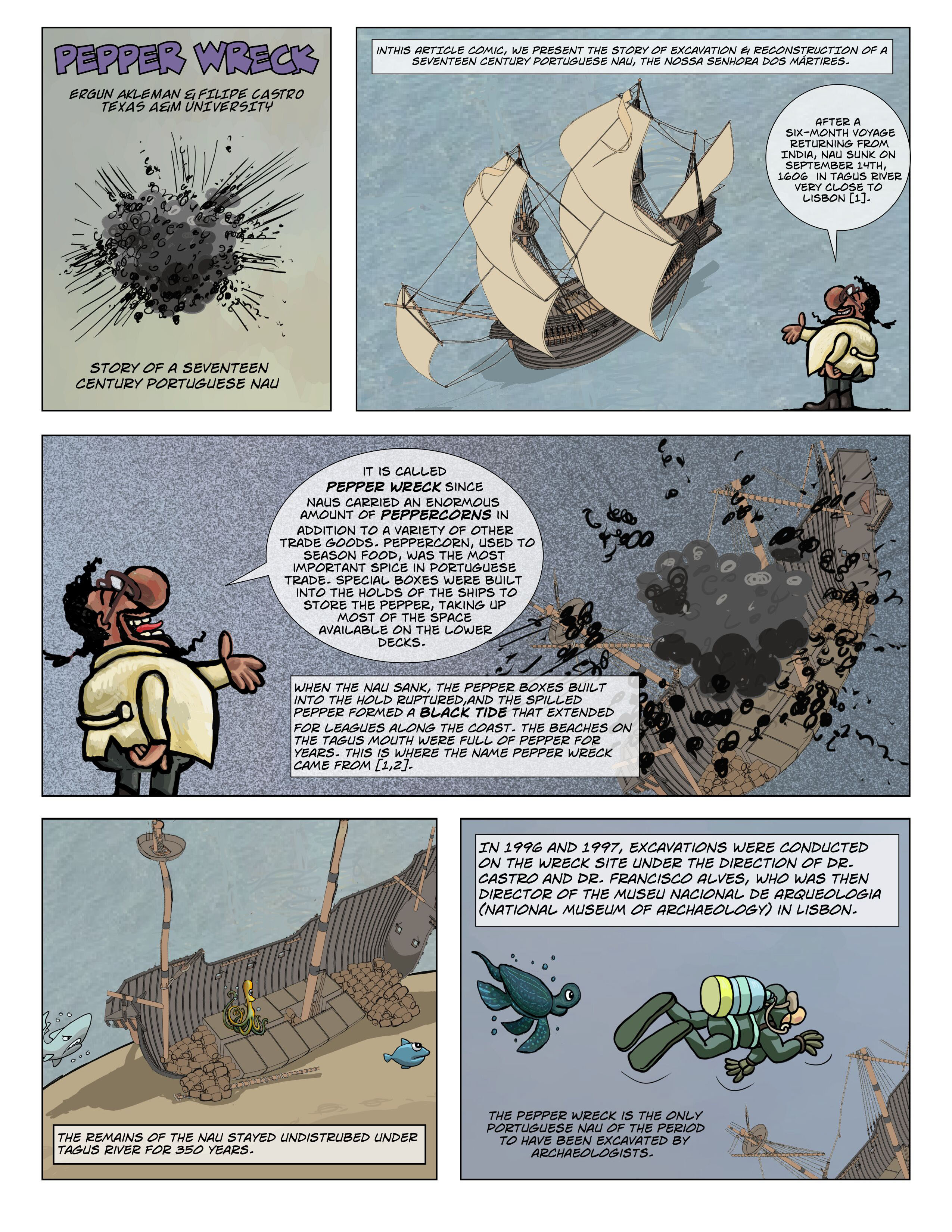Juan David Sarmiento Rodríguez & Jesús Alberto Aldana Mendoza
Around a boat, regardless of its characteristics, a large number of questions can be asked: what materials were used for its construction? What type of construction was necessary to build it? Who built it? Where did it come from? What can it be used for? What is its temporality? How was it lost? Among many others. Nautical archaeology, therefore, has an important task to develop since around all the bodies of water in the world it is possible to find all kinds of ships used years, decades, centuries and even millennia ago. For this case, the present reflection starts from the different approaches that may exist when interpreting a large ship (for example, a ship of the line destined for war) or a vessel of a much smaller size (such as a canoe for fishing).
Beyond the obvious difference that exists in the sizes of the ships, the starting point is those questions that can be answered about the historical societies that inhabited a certain territory, based on the remains that were once lost and are interpreted today by maritime, underwater and nautical archaeology. Therefore, both cases are framed in the analytical interpretations of these disciplines, however, the main difference that can be discussed in this space is concerning the “scales”. Of course there are some points in common, since regardless of the size of the ship for both cases it is intended to understand, for example: the phases corresponding to shipbuilding and its technical complexes, their uses while they were functional elements, technological evolutions that they experienced, among others.
Based on the aforementioned, the main parallel to be established lies in that differentiation that may exist between “industrial shipbuilding” and “artisanal shipbuilding” (to name them in some way). In this order of ideas, in the case of the first it is possible to point out that the questions that arise are established within the framework of a spatial scale linked to transits of long trajectories of thousands of kilometers (ships used to connect continents or oceans). The second, for its part, in most cases raises issues more related to transit at a local scale (connecting islands, bays or regional territories).
On the other hand, large vessels offer a very particular level of analytical detail, insofar as it is possible to ask them even the name by which they were called, instead, in smaller vessels this would be extremely complicated, which generates that the questions that are make to them must go by another line. Thus, the questions that arise from industrial shipbuilding have the ability to ask not only “what type of ship is it?”, but also “which is it specifically?”, instead, from artisanal shipbuilding it would be possible to question “what constructive style does the boat have?” or “to which community did this possibly belong to?”
Now, it is clear that one of the main interpretative differences that exist are subject to the availability of information sources. On one hand, given the complex infrastructure that a large interoceanic ship required, the archaeological evidence that is preserved over time may be greater and very diverse. In the case of a canoe, for example, its size limits the number of artifacts that can be found in a certain context (all subject, of course, to the site formation processes). On the other hand, for large ships, the availability of written historical documents allows a greater number of sources to be consulted to fully understand the elements, something that is very difficult for small ships (without reject the possibility that this happens).
In the same way, it is possible to point out that in the larger ships the transit of the vessel (which can become interoceanic) begins to pose a difficulty in the interpretation of materiality, since its origin can be very diverse (wood from certain region, built in a given shipyard, international construction standards, intercontinental cargo and shipwrecked in a completely isolated space). Rather those of smaller size could correspond to a whole set of elements that can come, in most cases, from the same cultural area (on a regional scale).
Consequently, it is one thing to ask about national shipbuilding (for example, the Spanish one, which had shipyards in various parts of the globe) and it is quite another to ask about a local construction (in which its diversity varies in the autochthonous particularities of a certain space). Likewise, question about the number of people who were involved in the construction of the boat: in the case of the larger ones, there was generally a whole structure of previously trained and specialized workers in the different tasks that are required for said construction, unlike the smaller ones, in which a small number of people worked on the total construction of the boat.
In short, it is clear that despite the fact that both cases are framed in a nautical archaeology, there are a great number of differences in their investigative approaches that are not limited only to their respective sizes (only some were named here to illustrate). In line with the above, many of the questions depend directly on the amount and availability of naval archaeological evidence, as well as the existence or absence of historical or oral sources of information. Therefore, the advantages and disadvantages are very diverse, however, it is the interpretive frameworks of nautical archaeology that will allow all questions to be answered and then there is a comprehensive understanding of the contexts. Allowing that the disparity between one and the other does not fall in terms of “better or worse” or “easy or difficult”, but simply in two “different” scenarios, very complex, but possible and important to understand.





